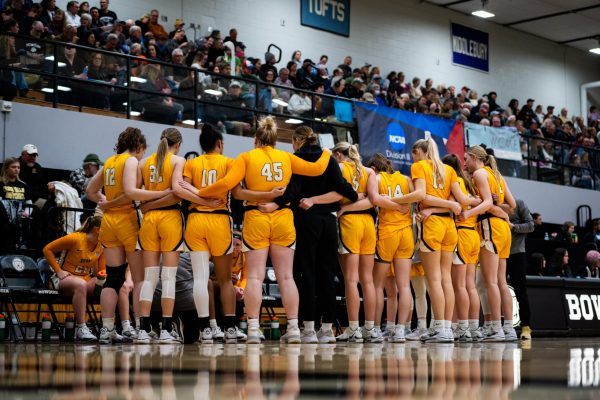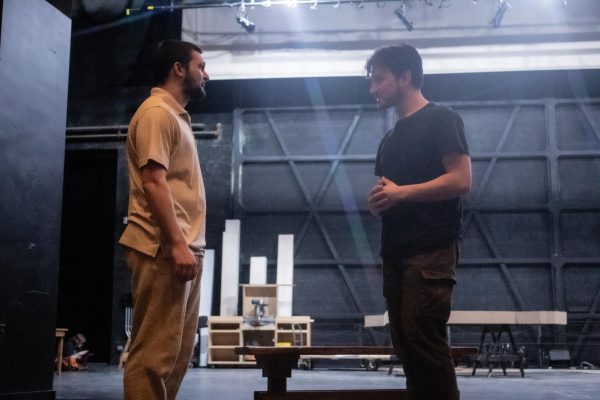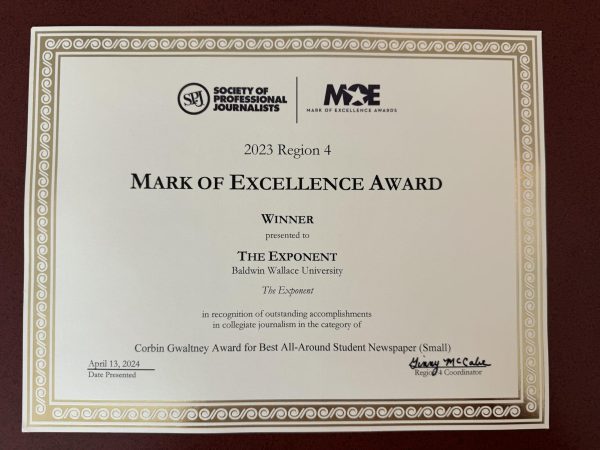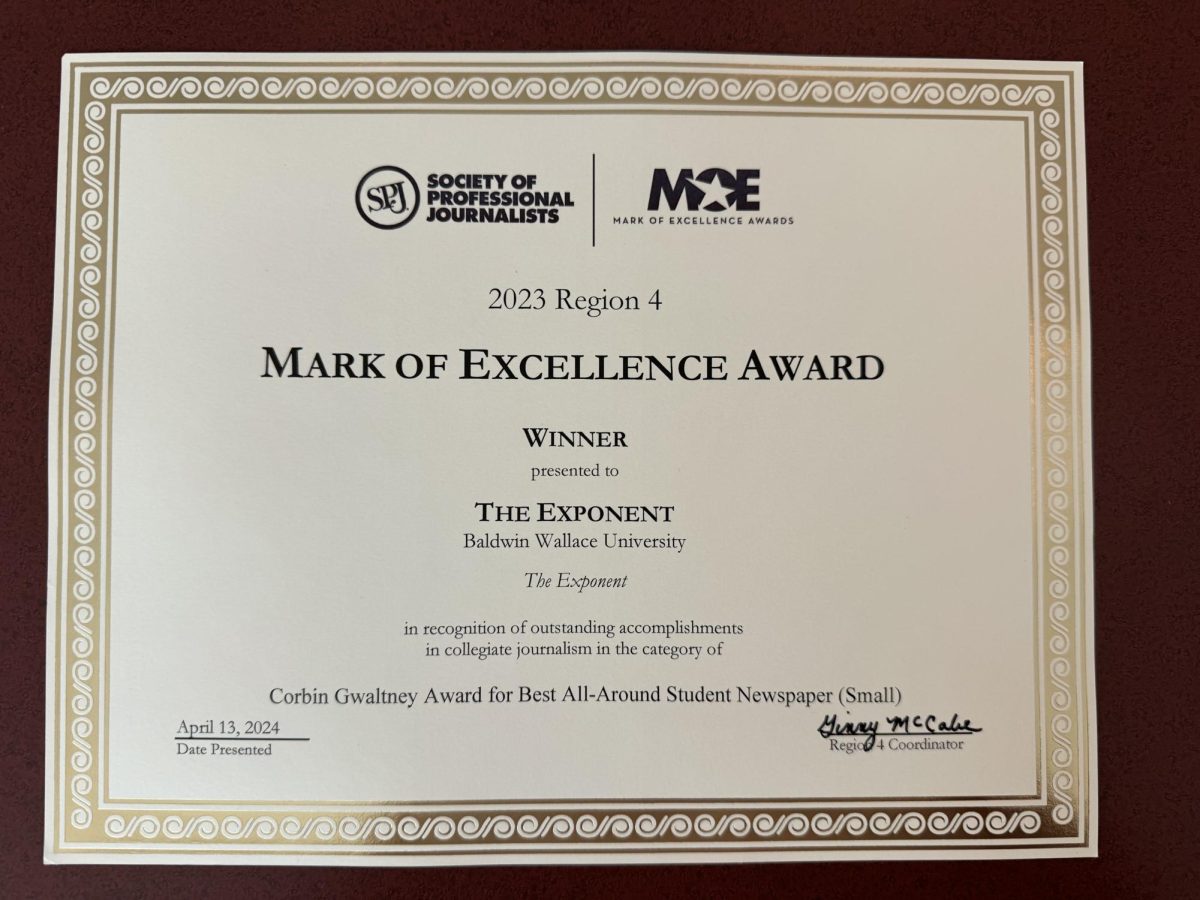Renowned Cleveland Orchestra begins year-long residency at BW Conservatory
Starting this Fall, Baldwin Wallace University will play host to a world-renowned organization.
The Cleveland Orchestra will participate in a year-long residency with the Baldwin Wallace Conservatory of Music spanning the 2018-19 school year, including on-campus discussions, masterclasses, and performances.
The Orchestra, celebrating its centennial this year, has long been lauded as one of the finest orchestras in the country, and the world, by critics. Considered a member of the “Big Five,” or the top five orchestras in the U.S.—alongside the Boston Symphony Orchestra, the Chicago Symphony Orchestra, the New York Philharmonic, and the Philadelphia Orchestra—the Cleveland Orchestra has also been ranked in the top ten orchestras in the world.
The residency will provide the BW community with insight and exposure that they could not get anywhere else, said Susan Van Vorst, dean of the BW Conservatory of Music.
“The Cleveland Orchestra is such an industry leader among major orchestras,” said Van Vorst. “The whole industry is watching what they’re going to do next…some of the things that they’re doing are really quite innovative.”
According to Van Vorst, this residency extends the longstanding partnership with the orchestra and was made possible by BW Trustee Steve Boesel. Many members of the Conservatory, including Van Vorst, have prior employment and connections to the orchestra. Before becoming dean, Van Vorst worked as director of development for the Musical Arts Association, a non-profit organization entrusted with the promotion of the Cleveland Orchestra, and she feels the residency will provide students with insight into far more than just the musical talents of the orchestra.
“I so wanted [BW students] to have this experience,” said Van Vorst. “Obviously, the [orchestra’s] artistic excellence is at the forefront of the whole equation here, but that artistic excellence has to have a huge machine behind it to support that and present that.”
Equating the orchestra to an iceberg, she said that the polished performances the public sees on the surface are only a fraction of what it takes to succeed in today’s market, with huge effort from the Cleveland Orchestra’s administration lying underneath. According to Van Vorst, the business model of the modern orchestra “does not work,” which makes any orchestra’s relationship with its community vital to its survival.
The residency will officially kick off with that behind-the-scenes concept, as the Center for Innovation & Growth’s (CIG) fourth annual Arts Innovation Summit will feature the Cleveland Orchestra’s administration alongside BW faculty discussing problems affecting symphony orchestras in the 21st century. “Facing the Music: Challenges of Today’s Orchestra,” the official start of residency, will take place on Oct. 2 at 4 p.m. in Gamble Auditorium in the Kulas Musical Arts Building.
Despite the Cleveland Orchestra’s success on the stage and behind the scenes, not all orchestras are able to keep up with the rapidly changing music market. Just in 2011, fellow “Big Five” orchestra, the Philadelphia Orchestra, filed for Chapter 11 bankruptcy blaming high rent costs, employee wages, and lack of donations for their financial troubles. Frustrations peaked in 2016 when orchestra members went on a two-day strike over pay and benefits lost five years earlier.
The CIG event is just the first of a year of programming involving the orchestra, Van Vorst said. A full list of events for the Cleveland Orchestra residency can be found on the conservatory events page.
Though this summit will mark the official opening of the residency, a concert on Aug. 29 titled “Faculty and Friends: Chamber Music Recital” served as “a soft opening” for the residency, she said.
Barton Samuel Rotberg, lecturer in violin at BW, performed second violin on this concert alongside four Cleveland Orchestra musicians. Two of those musicans—Daniel McKelway, professor in clarinet, and Lembi Veskimets, lecturer in viola—also serve as faculty at BW’s conservatory.
“We had a special chemistry,” said Rotberg about the performance. “It’s not always true when you get top-notch musicians together, but this group, I felt…even if they had differences, they understood each other’s ideas…a very special experience.”
While BW is home to eight faculty members who are also members of the Cleveland Orchestra, he said he does not always get the chance to perform with these musicians whose fulltime jobs are in the Cleveland Orchestra.
Though many may associate the Cleveland Orchestra residency with instrumental performance, it is truly an opportunity for all students, said Danielle Kuntz, assistant professor of music history & literature and Riemenschneider Bach Institute scholar-in-residence.
“I believe that all of our student musicians will stand to gain much from the events of this residency,” she said. “Whether they are studying for a career in performance, music history, arts management, or otherwise.”
To Kuntz, though the Cleveland Orchestra residency is important to the learning experience at BW. The orchestra is just “one model” of a successful and thriving music ensemble in the Cleveland area, she said.
Kuntz said she hopes that the residency inspires students to “seek out opportunities” with various ensembles and various styles of music.
“Interestingly,” she said “one of the Cleveland Orchestra’s greatest achievements in recent years has been the growth in attendance by young audience members… a demographic that would include our BW student attendees.”
The Cleveland Orchestra was founded in 1918 and first performed at Baldwin Wallace in 1920. Publications like the New York Times and the Washington Post have frequently promoted the orchestra as a member of the “Big Five” of orchestras in the United States. Internationally, the orchestra has also received acclaim with publications such as the U.K.’s “Gramophone” music review listing Cleveland’s orchestra among the top ten in the world. The New York Times last year dubbed the Cleveland Orchestra as “America’s most understatedly amazing orchestra.”
The orchestra also made national headlines in late July, stemming from accusations against the organization’s concertmaster, William Preucil, who has since been suspended from the orchestra. He did not and does not have any role with the BW residency.
In a press release, André Gremillet, Executive Director of the Cleveland Orchestra, called the BW residency a “unique opportunity.”
“Across the past decade, the Cleveland Orchestra has continued exploring a range of new ideas and programs in order to expand our education and community programs,” he said. “We are constantly looking for innovative and efficient ways to reach more people — students of all ages and adults throughout the community — with meaningful musical experiences. The Orchestra and Baldwin Wallace have a rich history of collaboration across many decades, in which Cleveland Orchestra musicians and administrators have taught and mentored new generations of artists and arts administrators. This will be the first time The Cleveland Orchestra and Baldwin Wallace have formally teamed up for a season-long program of offerings. It will be a tremendous experience for everyone involved.”
Ticket information for events and concerts, many of which are free and open to both students and the public, are listed on bw.edu/tco.
The Exponent is looking for financial contributions to support our staff and our newsroom in producing high-quality, well-reported and accurate journalism. Thank you for taking the time to consider supporting our student journalists.










































